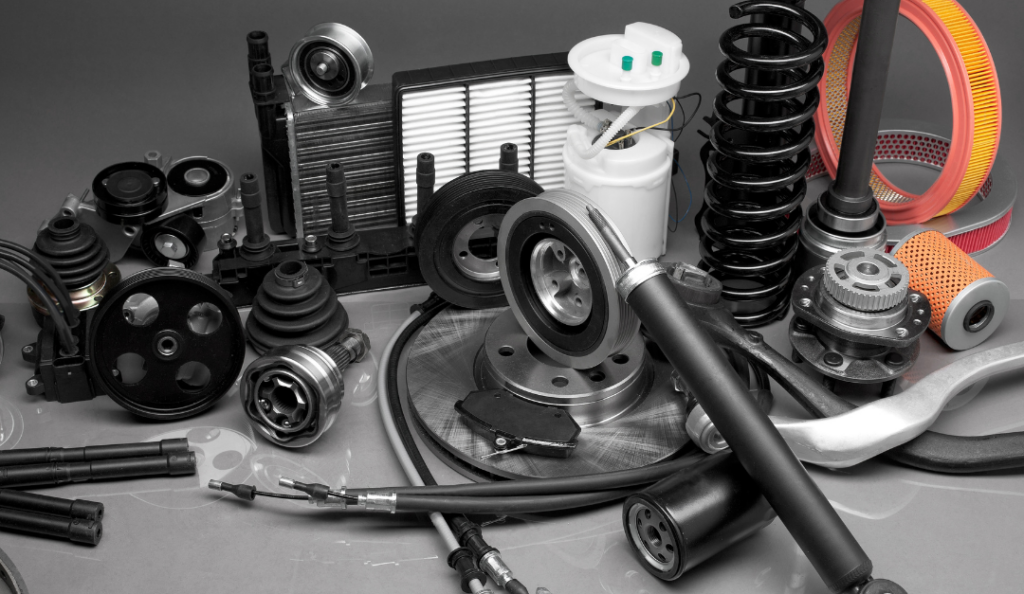June 5, 2025
The Ripple Effect: How Tariffs are Reshaping the Auto Industry and Auto Claims
Introduction
Car insurance rates are expected to rise in the coming year due to increasing costs of vehicles and parts. The United States imports a significant amount of vehicle components from Mexico, Canada, and China, and tariffs have raised the price of these imported goods.
Tariffs of 25% were implemented on May 3, 2025, for certain imported automobile parts, in addition to the tariffs imposed on imported vehicles on April 3, 2025. Consequently, the costs associated with car repairs and replacements will increase, resulting in higher insurance premiums and auto claims severity.
“The economic friction is not confined to the automotive industry; instead, it triggers a complex and far-reaching ripple effect for increased repair and replacement expenses for auto claims.”
This article presents insights from Roundtable discussions with claim executives regarding the effect tariffs on the automobile industry are having on auto claims and their actions to address these issues.

The Direct Effect of Tariffs on the Auto Industry and the Indirect Effect on Auto Claims
The direct impact of tariffs on the automotive industry is complex and far-reaching, touching on multiple facets of production, pricing, and consumer behavior. These tariffs, which target imported vehicles as well as essential components such as steel, aluminum, and advanced electronics, create significant financial strain for manufacturers.
Increased Manufacturing Costs
Tariffs are directly increasing the cost of manufacturing vehicles, stemming from duties on essential raw materials such as steel and aluminum, as well as a wide array of imported auto parts, including engines, transmissions, advanced electronics, and crucial semiconductors.
What is the effect on auto insurance claims?
Higher Repair Costs
When tariffs are imposed on raw materials (like steel and aluminum) and crucial imported auto parts (such as engines, transmissions, electronic components, and semiconductors), the cost of these inputs for vehicle manufacturers rises. These increased costs are then passed down the supply chain to repair shops.
When a car requires a new bumper, a replacement sensor, or a more complex component after a collision, the parts themselves are more expensive, which directly increases the severity. This is particularly relevant as a high percentage of vehicle content in the U.S. is sourced from foreign parts.
Increased Total Loss Determinations
As repair costs climb, the threshold at which a vehicle is considered a total loss is reached more quickly. If a car that might have been repaired in the past now costs more to fix due to expensive parts, it’s more likely to be declared a total loss. When a vehicle is totaled, the actual cash value may be higher due to tariffs that affect the prices of both new and used cars in the market.
Disruption to Global Supply Chains
Furthermore, tariffs are causing substantial disruptions to the intricate global automotive supply chain. The inherent complexity of sourcing thousands of components from various countries means that tariffs pose significant challenges in obtaining parts, resulting in extended lead times for production.
How does the disruption to global supply chains impact auto claims?
Extended Rental Car Coverage
Supply chain disruptions, often exacerbated by tariffs causing delays in part shipments, mean vehicles spend more time in repair shops. If a policyholder has rental car coverage, the extended repair period translates directly into a longer rental car duration, thereby increasing the cost that insurers must cover.
Shop Labor Costs
Beyond rental costs, these delays can also indirectly affect labor costs at repair facilities as shops deal with backlogs and decreased throughput, potentially leading to higher hourly rates to compensate for reduced efficiency. Ultimately, these compounding factors—delayed repairs and increased related expenses—contribute to higher overall claim payouts, a cost that is inevitably passed on to consumers through increased auto insurance premiums.

Potential Responses and Mitigation Strategies
The claims departments at insurance companies need to proactively prepare for the impact of 25% tariffs on the auto industry, as these will significantly affect their operations and financial performance.
Here are some ideas on how your organization can prepare:
Take a Deep Dive into your claims data
To effectively address the challenges posed by supply chain disruptions and tariffs, insurance claims departments must leverage data analysis and predictive modeling. By examining historical claims data, insurers can pinpoint trends related to parts costs, labor rates, and the frequency of total losses.
Segmenting this data further by vehicle make, model, and origin enables a deeper understanding of how tariffs specifically affect imported and domestically produced vehicles. Additionally, tracking the reliance on imported parts in common repairs provides valuable insight for anticipating future claims costs.
Re-evaluate Total Loss Thresholds
Given the increasing value of vehicles and repair costs, a larger number of cars may be classified as total losses. Claims departments may want to reconsider their criteria for assessing total losses accordingly.
Additionally, ensure that adjusters are provided with current market values for vehicles.
Optimizing Repair vs. Replace Decisions
Implement tools and training to assist adjusters in making informed choices between repairing or replacing a vehicle, considering the increased costs of both options.
Consider using remanufactured, aftermarket, or salvaged parts where appropriate and safe to reduce costs while ensuring quality and safety standards are upheld.
Fraud Detection and Prevention
The heightened economic pressure resulting from tariffs may cause an increase in fraudulent claims. Claims departments are advised to strengthen their fraud detection mechanisms by incorporating advanced analytics and providing training for adjusters to identify and address suspicious activities effectively.
Impact on Customer Service
In addition to the impacts of repairs, Total Losses become even more of a challenge to settle. Rising older car values will eventually catch up as new car sales decline, but they lag behind, so people often think they will get more for their older cars, which impacts customer service. While there is education, the impact will be to retain the insured and provide the best service with extra care during tariff periods.
Consider educating policyholders on the underlying cost drivers behind rising auto insurance premiums. Transparency is key to maintaining trust and understanding during a period of increasing financial strain for consumers.
Discuss and develop a plan for the impact on your customers. You should be discussing training, particularly when negotiating a total loss value, especially in a shifting market. There will be a period when values are definitely negotiated until the market settles down.
Explore New Partnerships with Repair Shops and Parts Suppliers
In response to the challenges, explore new partnerships with repair shops and parts suppliers. This includes working more closely with their networks of approved repair facilities to manage costs more effectively and improve turnaround times.
Investigate opportunities with suppliers of domestically produced or alternative (non-OEM) parts where tariffs do not apply, provided these parts meet strict quality and safety standards. The goal is to identify and leverage more resilient and cost-effective supply chains for replacement parts, which could involve negotiating favorable rates or developing preferred supplier agreements to mitigate the direct impact of tariffs on repair expenses.
Another approach is to encourage policyholders to consider original equipment manufacturer (OEM) parts from domestic sources (if available) or even “aftermarket” parts as alternatives to potentially more expensive imported OEM parts, though this can be a complex issue with varying opinions on quality and safety.
Key Takeaways
Tariffs and supply chain disruptions are increasing auto repair costs, leading to higher insurance premiums and auto claims severity.
Claims departments may want to consider the following:
- Analyzing historical data to identify trends in costs and vehicle values.
- Re-evaluate Total loss thresholds due to rising repair and vehicle values.
- Optimizing repair versus replacement decisions can help mitigate costs.
- Strengthen Fraud detection and prevention in response to heightened economic pressures.
- Educating customers on social inflation, supply chain issues, and their impact on claim settlement is crucial for maintaining trust.
- Exploring new partnerships with repair shops and suppliers can help reduce costs and improve efficiency.
To learn more about how Auriemma Roundtables for P&C Claims members discuss this and other topics of shared interest with their peers, visit our Insurance Groups website page.



